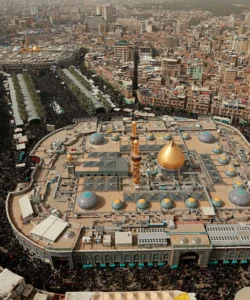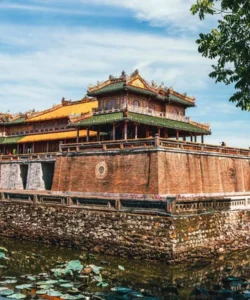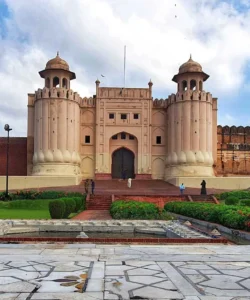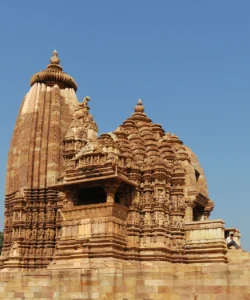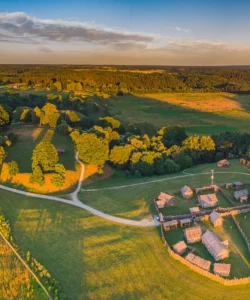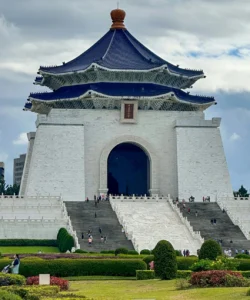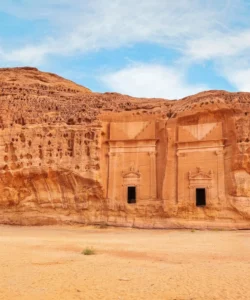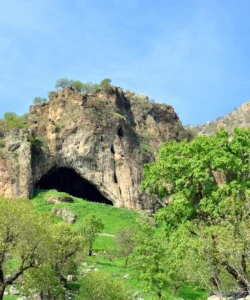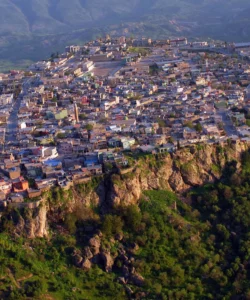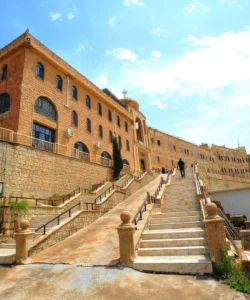The Great Ziggurat of Ur is a magnificent stepped pyramid temple located in the ancient Sumerian city of Ur, within modern-day Iraq. It is one of the most well-preserved and iconic monuments of ancient Mesopotamia, a testament to the advanced engineering, religious devotion, and political power of the Sumerians.
Name: Great Ziggurat of Ur (Sumerian: Etemenniguru, “house whose foundation creates terror”; Arabic: زقورة أور, Ziggurat Ur)
Address: The archaeological site is located near the city of Nasiriyah, Dhi Qar Governorate, Iraq. It is situated on the west bank of the Euphrates River, approximately 17 kilometers (11 miles) southwest of Nasiriyah.
How to Get There:
Travel to the Great Ziggurat of Ur is extremely difficult and unsafe for general tourism due to the political instability and security concerns in Iraq. The following information is for historical context and is not a recommendation for travel.
- By Air: The closest international airport is Basra International Airport (BSR). From there, a road trip would be necessary. In more stable times, Nasiriyah has a domestic airport.
- By Road: The site is accessible by road from Nasiriyah. A guided tour is highly recommended for security and logistical reasons.
- On-Site: The ziggurat is the centerpiece of a larger archaeological complex, and the site is vast.
Landscape and Architecture:
The Great Ziggurat of Ur is an imposing and beautifully preserved monument of ancient Mesopotamian architecture, built with a unique construction technique.
- UNESCO World Heritage Site: The Great Ziggurat is part of the larger “Ahwar of Southern Iraq: Refuge of Biodiversity and the Relict Landscape of the Mesopotamian Cities” UNESCO World Heritage Site, inscribed in 2016.
- Three-Tiered Structure: The ziggurat is a massive, three-tiered solid mud-brick platform, with a rectangular base measuring approximately 64 meters by 46 meters (210 by 151 feet). Its original height is estimated to have been around 30 meters (98 feet), though only the first two tiers are well-preserved today.
- Construction Materials: The ziggurat was built using two types of sun-dried mud-bricks:
- Inner Core: The massive inner core was constructed of sun-dried mud-bricks.
- Outer Casing: The outer layers were encased in a protective shell of fired bricks, each weighing around 15 kg (33 lbs) and held together with a mortar of bitumen (asphalt), a substance commonly found in the region. This unique construction method was incredibly durable.
- Monumental Staircases: The first tier of the ziggurat is ascended by three monumental staircases, each with around 100 steps. Two staircases run parallel to the side walls, and one juts out from the center, converging at a gatehouse on the first platform. From there, a single staircase led to the temple at the summit.
- Temple on the Summit: Although the temple that once crowned the ziggurat is completely gone, its original function was to serve as a sacred space for the worship of the moon god Nanna (also known as Sin), the patron deity of the city of Ur.
- Restoration: The ziggurat was partially restored in the 1980s under the orders of Saddam Hussein, but its original form and structure have been largely preserved. The modern restoration added a staircase and some top tiers.
- The Royal City of Ur: The ziggurat is the most prominent feature of a larger archaeological site that includes the ruins of royal palaces, temples, residential areas, and the famous Royal Cemetery of Ur, where archaeologists uncovered the magnificent gold treasures of Queen Puabi.
What Makes It Famous:
- Best-Preserved Ziggurat: The Great Ziggurat of Ur is globally famous as the best-preserved ziggurat from the Neo-Sumerian Empire. Its monumental size, intricate construction, and relatively good state of preservation make it a prime example of Mesopotamian temple architecture.
- The Biblical City of Ur: The city of Ur is believed by many to be the biblical city of Ur of the Chaldees, the birthplace of the patriarch Abraham. This connection gives the site immense religious significance for Jews, Christians, and Muslims.
- Symbol of Sumerian Civilization: The ziggurat is a powerful symbol of the advanced civilization of the Sumerians, who developed the first known system of writing (cuneiform), established cities, and pioneered monumental architecture.
- Archaeological Significance: The site of Ur is one of the most important archaeological excavations in the world. The work of Sir Leonard Woolley and his team in the 20th century revealed a wealth of information about Mesopotamian civilization, including the Royal Cemetery, which provided stunning artifacts.
- Engineering Marvel: The construction of the ziggurat, using a massive core of sun-dried mud-brick and a waterproof casing of fired brick and bitumen mortar, was a remarkable feat of ancient engineering.
Differences from Some Other Wonders:
- Ziggurat as a Religious Structure: Unlike the Egyptian pyramids (which were tombs) or the Greek temples (which were homes for the gods), the ziggurat was a temple platform. It served as a massive pedestal for a smaller temple at the summit, where priests would commune with the gods. The people did not enter the ziggurat itself.
- Construction Material: The use of mud-brick and bitumen is a key differentiator from the stone of the Egyptian pyramids or the marble of the Parthenon. This construction method reflects the local resources of Mesopotamia, which lacked stone but had an abundance of clay and tar.
- Religious Significance to Multiple Faiths: Its connection to Abraham gives it a unique and profound spiritual importance to Judaism, Christianity, and Islam, a cross-cultural significance that is a central part of its modern fame.
- Controversial Modern Restoration: Similar to Babylon, the ziggurat has seen some modern restoration by Saddam Hussein, which has added a new layer to its history.
- Focus on a Foundational Civilization: While Babylon is famous for its role in two later empires, the Great Ziggurat of Ur is famous for its connection to the foundational Sumerian civilization, the earliest known urban civilization in Mesopotamia.
- A “Tomb of the King of Kings”: The presence of the Royal Cemetery of Ur, with its magnificent treasures and evidence of human sacrifice, is a key part of the site’s fame, adding a unique, macabre, and rich archaeological dimension.
Great Ziggurat of Ur Photos:































